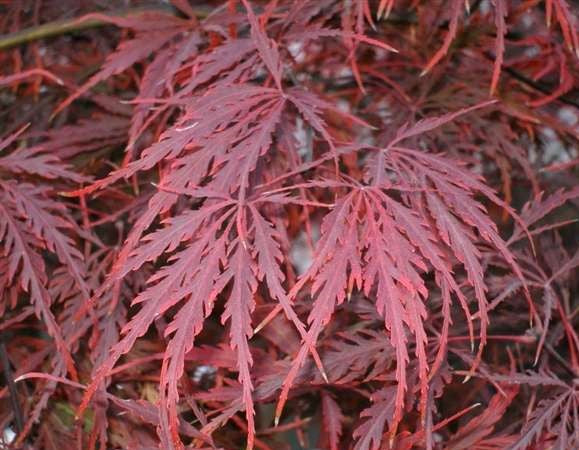
Yellowing leaves are arguably the most prevalent issue in the gardening world. Why are my Crimson Queen Japanese Maple Tree leaves turning yellow? This type of disease is one of the most frustrating for Crimson Queen Japanese Maple Tree owners, we give you all the leads to spot and save your plants that present symptoms such as leaves that suddenly change color, or wilt/droop. Why does my Crimson Queen Japanese Maple Tree have leaf spots? We strongly advise you to remove the damaged plant parts, cut off the diseased roots and leaves, and then repot your plant in a new container with sterile potting soil. Most frequently, it results from the Acer palmatumvar.dissectum’Crimson Queen’ being overwatered. The answer is obvious once you recognize the cause of the problem. Don’t ignore these symptoms, as they may end up killing your plant.

If you notice brown (or gray) spots, it is probably this fungus. Gray mold spots are a type of fungus that is found a lot in flowers, and spreads quite rapidly. Why does my Crimson Queen Japanese Maple Tree have gray mold spots? For this reason, if the symptoms appear, we highly advise that you adhere to our recommendations to keep your plant alive: Blackened and softened roots. If left untreated, root rot on your Crimson Queen Japanese Maple Tree (Acer palmatumvar.dissectum’Crimson Queen’) can be fatal. Why does my Acer palmatumvar.dissectum’Crimson Queen’ roots have rot? The cascading habit and bright-red leaves of the maple can make it a good fall foliage tree. One of the prettiest dwarf trees is the Crimson Queen Japanese maple tree, which is a variation of standard Japanese maples. NOTE: In this article, Crimson Queen Japanese Maple Tree and Acer palmatumvar.dissectum’Crimson Queen’ may be used interchangeably in fact, Acer palmatumvar.dissectum’Crimson Queen’ is the botanical name for Crimson Queen Japanese Maple Tree.


 0 kommentar(er)
0 kommentar(er)
